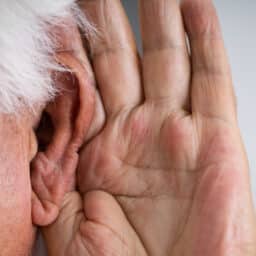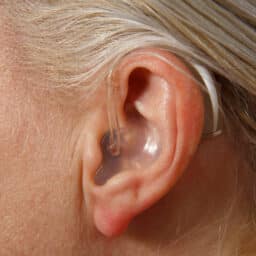Tips To Protect Your Hearing This July Fourth

July Fourth is here again, and with it comes barbecues, warm weather and, most importantly, fireworks. While fireworks are a fun way to celebrate the Fourth of July, they can get pretty loud, sometimes reaching upwards of 150 dB—well above the threshold for hearing damage. Let’s take a look at a few safety tips you…
Outdoor Adventures and Hearing Aids: Tips for Enjoying Spring Safely

With the weather getting warmer, it’s the perfect time to start enjoying your favorite outdoor adventures. Whether you’re a fan of spring bike rides, rock climbing, cycling or yoga in the park, hearing aids offer better communication, enjoyment and safety. Let’s take a look at how hearing aids can improve your safety during outdoor adventures…
How Does Hearing Aid Non-Use Affect Hearing Health?

Hearing aids offer clearer communication, yet only a small percentage of adults who could benefit from them choose to use them. Many hesitate due to concerns about appearance or the belief that their hearing loss isn’t advanced enough to warrant treatment. However, choosing to forgo hearing aids can result in a phenomenon known as auditory…
Hearing Loss and the Workplace: What To Know

Your hearing makes it possible to participate in conversations, recognize environmental and safety sounds, locate the direction sound comes from and more. However, when you develop hearing loss, these important skills can fall by the wayside. One area you can see these adverse side effects is your workplace. How Does Hearing Loss Affect My Work…
Four Hearing Health Resolutions for the New Year

It’s time to set your New Year’s resolutions! While most people focus on goals like eating healthier, getting more sleep or saving money, one crucial area of health often gets overlooked—your hearing. Let’s explore a few simple resolutions to help you take better care of your ears in the year ahead. 1. Wear Earplugs Sound…
Navigating Thanksgiving Conversations with Hearing Loss

Hearing loss can make it difficult to understand and participate in conversations. This difficulty is only amplified in environments with multiple people speaking at once, lots of background noise and rapid topic changes—all common occurrences during a busy Thanksgiving dinner. While Thanksgiving gatherings may present challenges for people with hearing loss, there are a few…
Managing Hearing Aids and Glasses: A Practical Guide for Clear Sound and Vision

If you rely on both hearing aids and glasses, you know how these two devices can transform your daily life. However, managing them simultaneously can sometimes feel like a balancing act. Hearing aids sit behind or in your ears, while glasses rest on your ears and nose bridge, creating a shared space that can get…
How Can Hearing Aids Help You Enjoy Fall Activities

Autumn brings a season of outdoor adventures and cozy gatherings, from pumpkin patches to family celebrations. For those with hearing loss, these activities can present some challenges. However, modern hearing aids are equipped with features that make it easier to fully enjoy all that fall has to offer. According to the CDC, about 7% of…
How Can I Enjoy Football Season with Hearing Loss

Football season is a fun fall activity for many, whether following from the comfort of your home or experiencing the excitement of a stadium. If you wear hearing aids, or are one of the 28.8 million Americans who could benefit by wearing them, you might wonder how to fully enjoy the season while protecting your…
How Have Hearing Aids Improved Over the Years?

Did you know that of U.S. adults aged 20-64 who need hearing aids, only 16% wear them? Although hearing aids bring easier communication, many patients avoid wearing them because they’re picturing the bulky hearing aids of the past. Let’s take a look at how hearing aids have advanced into the sleek, modern devices we have…